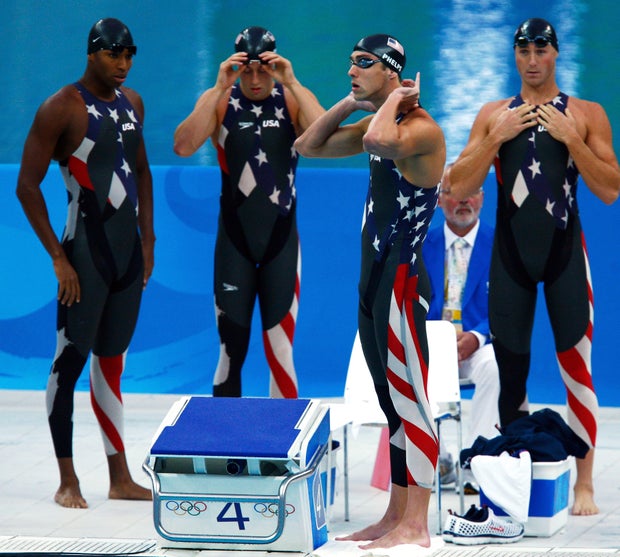Why some types of swimsuits are banned at the Olympics
Olympic swimmers abide by strict rules that govern individual events, but those rules extend beyond the pool to include the style of and material their swimsuits are made of.
For years, the Olympics has barred swimmers from wearing full-body swimsuits and suits made of certain materials following the widespread adoption of suits the competition felt gave an unfair advantage to certain athletes at earlier games.
Ahead of the 2008 Olympics in Beijing, Speedo introduced its LZR swimsuit, developed with assistance from NASA. The space agency noted that 25 world records in swimming were set during the Beijing 2008 Olympic Games, and that 23 were set by athletes wearing the LZR.
The Olympics now calls those games “a moment when technology went too far.” In a June post, the Olympics explained that the “super-suits” made of polyurethane or other non-textile materials were banned because they were seen to provide a greater advantage to larger athletes.
Changing rules around swimsuits
In 2009, Michael Phelps — who won a record eight medals in 2008 in Beijing — missed out on two finals and barely qualified for a third as he swam in an old-style swimsuit. Reports from the time show that most other swimmers he competed against used faster, high-tech suits.
Jamie Squire / Getty Images
FINA, now known as World Aquatics, in 2009 decided to ban the use of swimsuits with polyurethane during competitions. The rules, requiring textile-only fabric suits, went into effect in 2010.
The guidance also says men’s swimsuits “shall not extend above the navel nor below the knee and for women shall not cover the neck or extend past the shoulders nor shall extend below the knee.”
Speedo invited students to come up with ways to recycle the suits after the ban, CBS News previously reported.
How NASA worked with Speedo on the high-tech swimsuits
Shortly after the 2004 Olympics, Speedo-USA reached out to NASA for help develop a swimsuit that cut down on drag, according to a NASA post.
“While most people would not associate space travel with swimwear, rocket science is exactly what SpeedoUSA decided to try,” NASA wrote in 2008.
Researchers tested fabrics using a wind tunnel and a water flume, according to NASA. At the end, they had the LZR Racer, which NASA said reduced skin friction drag 24% more than the previous Speedo racing suit fabric.
Other rules around swimming gear
According to the Olympics, there’s also a ban on goggles for synchronized swimmers. According to the Olympics website, while swimmers practice with goggles during training, they’re banned during competitions.






